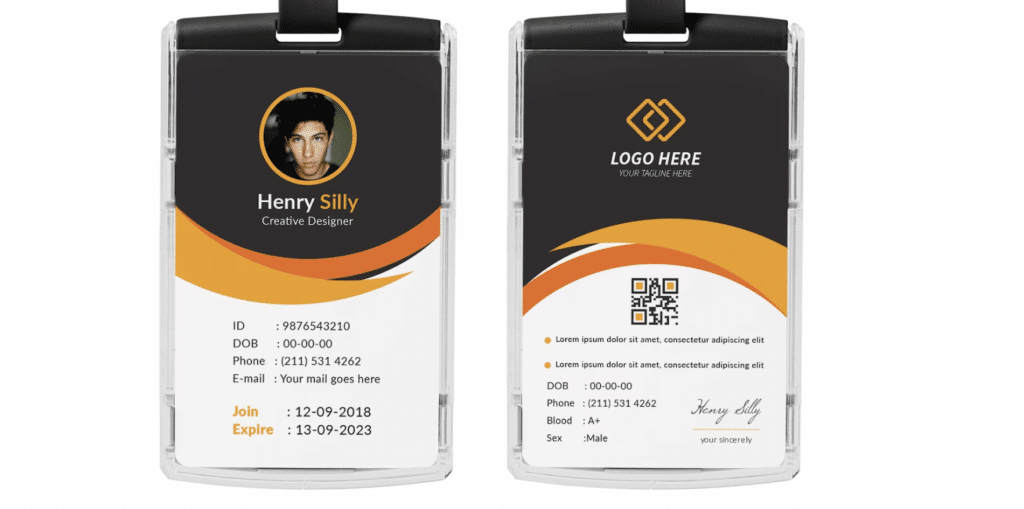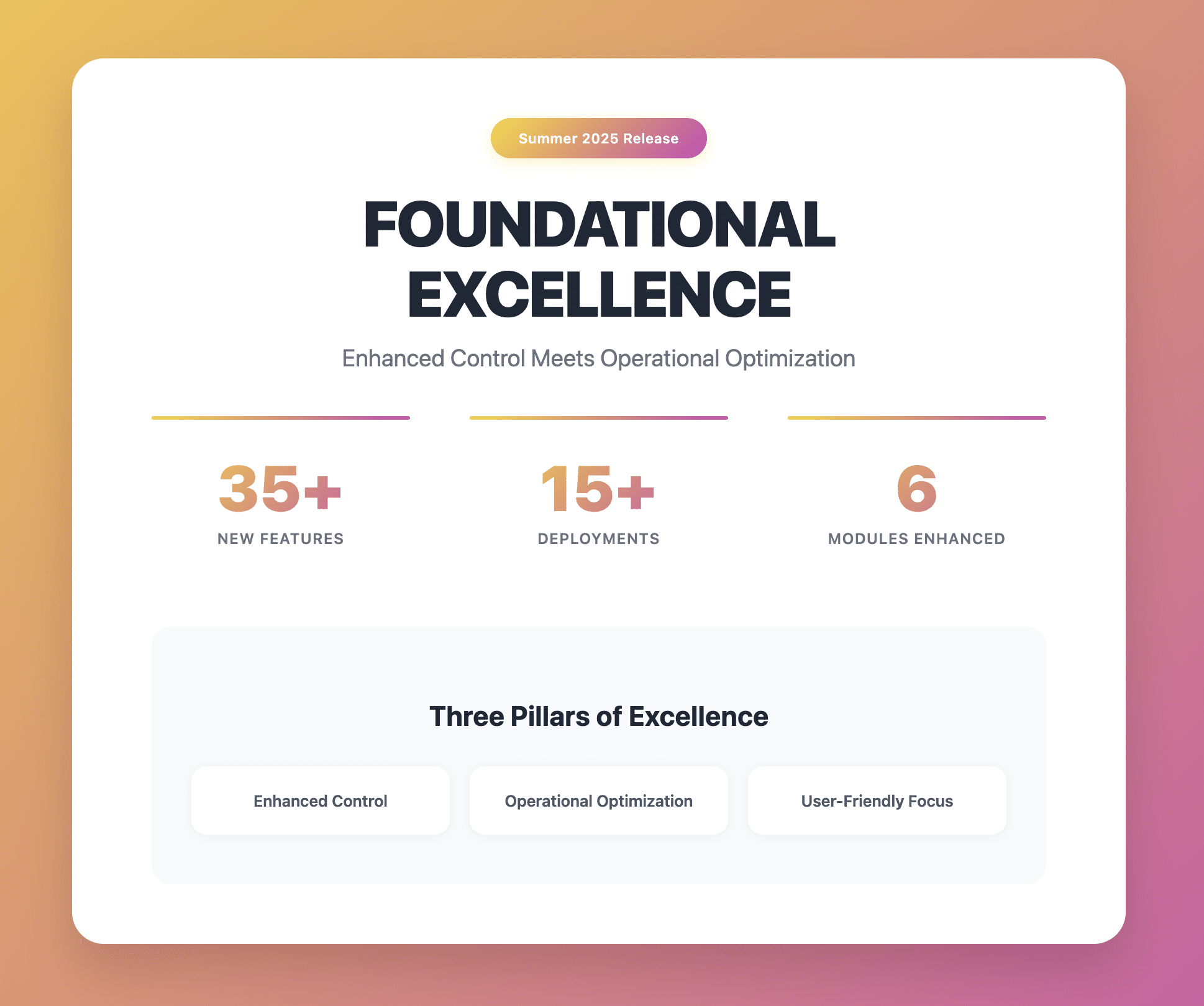In the world of events, event badges serve a fundamental purpose: identifying attendees granting access and networking. However, there is an emerging trend that goes beyond traditional badges – sustainable event badges. These eco-friendly alternatives are gaining prominence due to their positive impact on the environment and the enhanced experiences they offer.
In this blog, we will delve into the importance of sustainable event badges and explore how they go beyond identification to contribute to a more sustainable and memorable event experience.
Before that, let’s understand what exactly are event badges and the purpose they serve.
Event badges and their purpose
Event badges are identifiers worn by attendees, speakers, sponsors, and other participants at events. They serve as physical credentials, providing important information about the person wearing them. This is particularly useful in larger events where there are numerous people present
In addition to the basic identification information, event badges often feature a unique identifier, such as a barcode or a QR code. These codes can be scanned by event organizers or staff using devices or mobile applications. By scanning the code, the person’s information can be quickly accessed, verified, or updated in the event management system. This streamlined process facilitates check-ins, attendance tracking, and managing various aspects of the event efficiently.
Event badges come in various designs and formats, depending on the event’s nature, size, and level of formality. They can be simple paper badges, plastic cards, lanyards, or other wearable items.

The purposes of event badges extend beyond identification and can be categorized into several key areas:
Access Control: Event badges help regulate entry to different areas of the event, ensuring only authorized individuals can access specific sessions, VIP areas, or restricted zones. They enhance event security by distinguishing between different participant types, such as attendees, staff, or VIPs, and prevent unauthorized access to sensitive areas.
Networking and Engagement: Badges provide a way for attendees to easily identify and connect with others, facilitating networking opportunities. Attendees can quickly find common interests, organizations, or industry affiliations by glancing at each other’s badges, leading to valuable conversations and networking. The badges act as conversation starters, making it easier for participants to approach each other and initiate discussions.
Session Tracking and Attendance Management: Some event badges incorporate scanning or tracking technology, such as RFID (Radio Frequency Identification) or QR codes, allowing organizers to monitor attendee participation in various sessions or workshops. This data can help evaluate session popularity, gather feedback, and refine future event programming. Badges can also be scanned during entry and exit to track attendance and ensure accurate headcounts.
Sponsor Recognition and Branding: Event badges often display logos or branding elements of event sponsors, providing visibility and recognition for their support. Sponsors appreciate having their branding prominently displayed on badges as it increases their exposure to attendees. Event organizers can offer different levels of sponsorship packages with varying badge branding options, providing a valuable marketing opportunity for sponsors.
Information and Agenda Reference: Personalized badges can include additional information like session schedules, personalized agendas, or QR codes for easy access to event-related content. This allows attendees to have a quick reference to their individualized event schedules and access information relevant to their participation. Event organizers can leverage badges as a tool for disseminating important event details and updates.
Attendee Experience: Badges contribute to the overall attendee experience by serving as a source of pride and identification. They contribute to a sense of belonging and community, especially when attendees wear them throughout the event. The badges act as visual indicators of participation and affiliation, creating a cohesive event atmosphere and fostering a sense of unity among attendees.
Data Collection and Analysis: Event badges with embedded technology like RFID or QR codes can be scanned or tapped to collect data on attendee movements, session attendance, and overall event engagement. This data can be valuable for event organizers to analyze attendee behaviour, measure event success, and identify areas for improvement in future events.
Sponsorship Revenue Generation: Event badges offer sponsorship opportunities, allowing sponsors to have their logos or branding displayed on the badges. This can be a significant revenue stream for event organizers, as sponsors are willing to invest in prominent badge placement to increase their brand visibility and reach a targeted audience.
Event badges play a vital role in ensuring smooth event operations, enabling effective communication, enhancing networking opportunities, and reinforcing event branding. They are not only practical tools for identification but also serve as valuable assets for organizers and attendees alike. With the advancement of technology, badges have evolved to include interactive features, such as scanning or tapping, for data collection and personalized attendee experiences.
Quick tips for making effective event badges
Event badges may seem like a small detail for an event but they hold great value therefore it is crucial to ensure that event badges deliver all the important information.

Here are some quick tips to make effective and interesting event badges:
Direct and Clear: Ensure that the information on the badge is easy to read. Avoid overcrowding the badge with excessive information, and prioritize key details such as the attendee’s name, organization, and other essential identifiers.
Basic Branding: Incorporate the event branding and visual elements into the badge design. Use colours, logos, or graphics that align with the event’s theme or overall visual identity.
Incorporate Technology: Leverage technology to enhance the functionality of the badge. This can include barcodes, QR codes, or RFID technology for streamlined check-ins, session tracking, or access control.
Badge size and material: Consider the size and material of the badge for practicality and durability. Ensure that the badge is not too large or cumbersome to wear comfortably. Choose a sturdy material that can withstand normal wear and tear during the event.
Sustainable Lanyards: Select sustainable and recyclable lanyards that complement the badge design and provide a secure and comfortable way for attendees to wear their badges.
As part of the new Onsite Features, Gevme has launched a new Badge Designer, which is a visual tool built to design badges in a simple and efficient process. With Gevme’s new badge designer, organisers can easily incorporate:
1. Personalised details such as job title, company or any other attendee field.
2. QR codes for a seamless check-in and leads scanning
3. Edit any other graphics or design elements to stay on brand.
Let’s explore some sustainable ways to make event badges
Sustainable ways to make event badge
Material Selection: When considering the material selection for event badges, it is important to prioritize sustainability. One approach is to opt for eco-friendly materials that have a reduced environmental impact. Recycled paper or cardstock, for example, are excellent choices as they are made from post-consumer waste, diverting materials from landfills and reducing the need for virgin resources. Another option is to look for badges made from FSC-certified materials, indicating that the production process adheres to responsible forestry practices.
In addition to recycled or FSC-certified options, there are also innovative and sustainable materials available for badge production. Bamboo, for instance, is a fast-growing renewable resource that can be used to create durable and visually appealing badges. Cork, another sustainable material, is harvested from the bark of cork oak trees without harming the trees themselves. It offers a unique and natural aesthetic while being biodegradable and recyclable.
Don’t Pre-print Badges: One sustainable practice for event badges is to avoid pre-printing them. Instead of producing a large quantity of pre-printed badges, consider adopting an on-demand or just-in-time printing approach. This means that badges are printed as needed, right before or during the event.
By not pre-printing the badges, several benefits arise. First, it reduces waste significantly. With pre-printing, there is always a risk of overestimating the number of attendees, leading to unused badges that ultimately go to waste. On-demand printing ensures that only the necessary number of badges is produced, minimizing excess and reducing environmental impact.
Second, on-demand printing allows for greater flexibility and customization. Attendees’ information can be added to the badge in real time, ensuring accuracy and eliminating the need for manual updates or corrections. This approach also enables last-minute registrations or changes, providing a seamless experience for both organizers and attendees.
Minimalist Design: A minimalist design approach for event badges focuses on simplicity and clear communication. By eliminating unnecessary elements and visual clutter, the badge can be more sustainable by saving ink or dye. At the same time, it can effectively convey essential information such as the attendee’s name, organization, and job title.
Despite its simplicity, a minimalist design can still be visually appealing by carefully selecting colour palettes and incorporating branding elements that align with the event’s visual identity. Such a sustainable event badge helps the organiser to efficiently use space and resources.
Size Optimisation: When designing sustainable event badges, it is important to optimize their size to minimize wastage. By carefully considering the dimensions, you can provide enough space to include essential information without generating excessive waste. Opting for smaller badge sizes not only reduces the amount of material required but can also result in cost savings.
By finding the right balance between size and functionality, you can create badges that effectively serve their purpose while minimizing environmental impact.
Digital Badges: Explore using digital badges as an alternative to physical ones. Digital badges can be accessed through mobile apps or event management platforms, eliminating the need for printing and distribution. Digital badges can still contain all the necessary information and unique identifiers, offering convenience, reducing waste, and promoting a more sustainable event experience.
How digital badges contribute to sustainability:
Reduced Waste: Physical badges often end up discarded after an event, contributing to waste generation. Digital badges, on the other hand, are stored digitally and can be accessed anytime without the need for physical disposal. This reduces the amount of waste produced during and after an event.
Lower Carbon Footprint: The production and distribution of physical badges involve energy consumption, transportation, and associated greenhouse gas emissions. By opting for digital badges, these carbon-intensive processes are avoided, leading to a lower carbon footprint for events.
Convenience and Efficiency: Digital badges offer a more efficient and streamlined process for attendees. They can be accessed from the mobile app or event management platform, allowing attendees to save and share their badges through phones directly This eliminates the need for physical badge distribution and retrieval, saving time, resources, and logistical efforts.
Customization and Updates: Digital badges allow for easy customization and real-time updates. Event organizers can tailor the information displayed on the badge to suit specific attendee needs or event requirements.
Recyclable badge holders: Opting for reusable or recyclable badge holders is a sustainable practice that significantly reduces waste in event badge management. These durable holders are designed to be used multiple times, eliminating the need for single-use plastic or paper alternatives. By collecting and sanitizing badge holders at the end of events, they can be easily reused for future occasions, extending their lifespan and minimizing the environmental impact.
Choosing badge holders made from recyclable materials ensures that, when they reach the end of their lifecycle, they can be properly recycled and transformed into new materials. Implementing a collection and return system for attendees fosters a culture of sustainability and actively engages participants in waste reduction efforts.
Certifications: Sustainability certifications are essential in ensuring that event organizers adhere to stringent environmental standards and promote responsible practices. These certifications validate a commitment to environmental responsibility, as they require compliance with sustainable sourcing, waste reduction, carbon footprint reduction, and ethical labour practices.
By partnering with suppliers or manufacturers holding sustainability certifications, event organizers can demonstrate their dedication to minimizing environmental impact. These certifications also provide transparency and credibility, assuring stakeholders that badge production and associated processes meet established sustainability criteria. Ultimately, considering sustainability certifications allows organizers to make informed choices, contribute to a more sustainable event industry, and inspire positive change in the wider community.
Higher efficiency: Production efficiency in badge manufacturing is crucial for optimizing processes, reducing waste, and achieving sustainable outcomes. By streamlining operations and maximizing productivity, event organizers can conserve resources, minimize waste generation, and improve energy efficiency. This involves implementing lean manufacturing principles, such as just-in-time production and process optimization, to minimize material waste and reduce associated costs.
Quality control measures ensure the production of high-quality sustainable event badges, reducing the number of defects or errors. By continuously evaluating manufacturing processes and minimising waste, organizers can foster a culture of continuous improvement and sustainability.

To sum it all up
By incorporating eco-friendly practices into your sustainable event badge production, you actively contribute to reducing waste and conserving resources, promoting an environmentally responsible event. These sustainable practices not only align with the growing global focus on environmental responsibility but also provide an opportunity to educate and engage event participants in your sustainability efforts.








